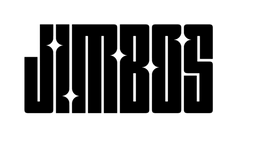How to Correct Paint Safely on Soft vs Hard Clear Coat
Not all clear coats are created equal. Some paints are notoriously soft and mar if you look at them wrong, while others are so hard that removing defects feels nearly impossible. Knowing how to correct paint safely on both soft and hard clear coats is critical for achieving swirl-free, glossy results without overworking the surface. In this guide, we’ll break down the differences, the risks, and the best strategies for correcting paint safely using Picture Perfect Polish.
What Is Clear Coat and Why It Matters
The clear coat is the protective, transparent top layer on modern vehicles. It shields the color basecoat from UV rays, oxidation, and environmental contaminants. However, not all clear coats have the same hardness. Manufacturers formulate them differently depending on paint chemistry, region, and production standards.
Soft clear coats: Easily scratched or marred, but also easier to polish.
Hard clear coats: More resistant to scratches, but require more effort to correct.
Examples of Soft vs Hard Clear Coats
- Soft Clear Coats: Many Japanese brands (Honda, Toyota, Mazda) are known for softer paint.
- Hard Clear Coats: German vehicles (Audi, BMW, Mercedes, VW) often have very hard clear coats.
- Medium Clear Coats: American brands (Ford, GM, Dodge) often fall somewhere in between.
Why Soft Paint Is Challenging
- Scratches and swirls easily during washing and drying.
- Micro-marring can appear even with mild polishing pads.
- Overworking the paint creates haze instead of clarity.
Why Hard Paint Is Challenging
- Defects are difficult to remove without aggressive compounds and cutting pads.
- Correction takes longer and often requires more passes.
- Some scratches may remain even after heavy correction.
Comparison: Soft vs Hard Clear Coat Correction
| Factor | Soft Clear Coat | Hard Clear Coat |
|---|---|---|
| Scratch Resistance | Low — scratches easily | High — resists scratches |
| Ease of Correction | Easy to cut, hard to finish perfectly | Hard to cut, easier to finish |
| Risk of Over-Polishing | High — can thin paint quickly | Lower — but requires more work |
| Best Tools | Soft foam pads, finishing techniques | Microfiber/cutting pads, rotary or long-throw DA |
How to Correct Soft Clear Coat Safely
- Wash Gently: Always use pre-soak methods with The Super Soaper to reduce wash-induced marring.
- Start Mild: Use a polishing or finishing pad with Picture Perfect Polish first. Often, you don’t need a cutting pad on soft paint.
- Use Light Pressure: Over-aggressive technique will create haze.
- Finish Slowly: Refine with slower passes and minimal pressure for clarity.
- Protect Quickly: Apply a ceramic spray like Tough As Shell immediately after correction to lock in results.
How to Correct Hard Clear Coat Safely
- Expect More Work: Hard paints need more time and patience.
- Choose Aggressive Pads: Microfiber or foam cutting pads paired with Picture Perfect Polish give maximum cut.
- Increase Machine Speed: Run your DA on speed 5–6 with moderate pressure for deeper defect removal.
- Inspect Frequently: Check with strong lighting to monitor progress.
- Refine If Needed: After cutting, switch to a polishing pad to enhance gloss.
Pro Tips for Working With Both Types
- Always test a small section before deciding on a pad/product combo.
- Don’t chase perfection — especially on daily drivers, 80–90% correction is safer long-term.
- Rotate clean pads often to avoid inconsistent results.
- Finish every job with a protective coating like Gloss Boss for durability.
Polish Safely on Any Paint
Whether your car has soft or hard clear coat, Picture Perfect Polish adapts with pad choice to deliver stunning correction and gloss.
Buy on Jimbo’s Detailing Buy on AmazonRelated Posts
- The Science of Paint Correction Explained
- How to Use a One-Step Polish for Maximum Cut
- Wet Sanding vs Polishing – When to Choose Each
FAQs
How do I know if my car has soft or hard clear coat?
Test polish a small section. If defects correct quickly, it’s likely soft. If it takes multiple passes with a cutting pad, it’s likely hard.
Is soft paint more dangerous to correct?
Yes. Soft paint is easier to mar, so you must use lighter pressure and proper pad choice.
Can one-step polishes work on hard clear coats?
Yes, but they may require microfiber or heavy-cut foam pads and multiple passes for deeper correction.
Do German cars always have hard paint?
Not always, but many are known for harder clear coats compared to Japanese vehicles.
How do I avoid over-polishing on soft paint?
Start mild, inspect frequently, and stop as soon as you achieve acceptable correction. Don’t chase perfection.



